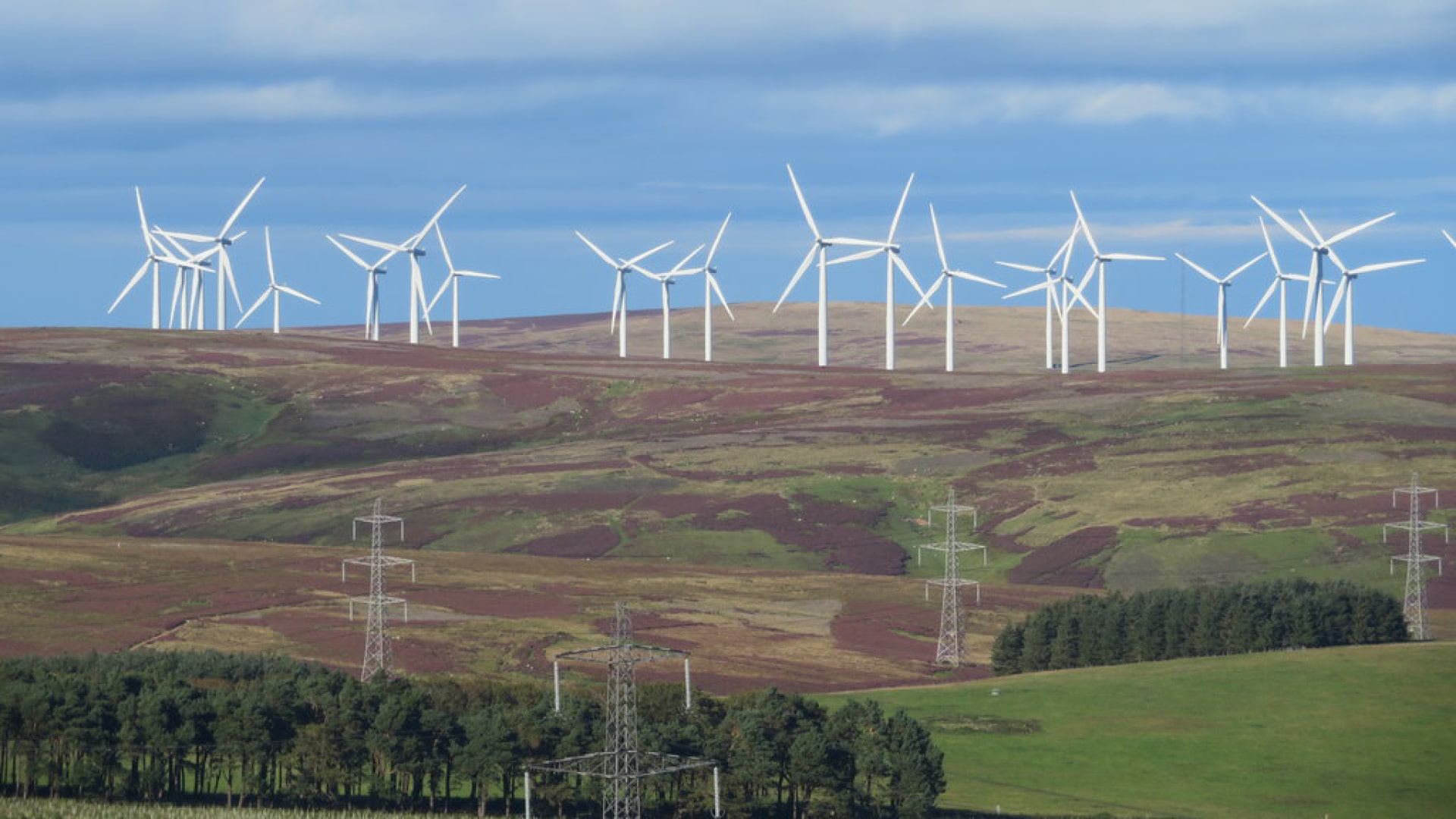Create welcomes Labour’s changes to onshore wind development in England
Yesterday the government announced the immediate lifting of the de facto ban on onshore wind development in England, which was put in place in 2015 under David Cameron’s leadership. The ban was caused by two footnotes to the National Planning Policy Framework (NPPF) which meant that onshore wind development effectively needed irrefutable proof that there was no opposition locally to be built. Under Labour’s draft NPPF, these footnotes have been deleted in their entirety. The move is a part of their commitment to double the capacity of onshore wind in Britain by 2030, boosting energy independence and securing the nation’s energy security for the future. Chancellor Rachel Reeves also confirmed that the new government will consult on further revisions to the NPPF, and write to local planning authorities to say that universal local plan coverage and green belt reviews are required, before the end of the month.
Since the de facto ban was implemented, data shows that there has been a significant decrease in onshore wind development in England and that despite a steady pipeline of developments, few get built. The decline, or rather stagnation, in onshore developments has had several knock-on effects, ultimately leading to a reduced capacity and causing bill payers to miss out on potential cost savings. Major geopolitical events, outside of our control, such as Russia’s war on Ukraine, have also inflated energy prices and forced suppliers into a corner, which is why we unanimously welcome this move by the Chancellor Rachel Reeves and are encouraged by the immediacy of the government’s actions. Currently over half (63%) of onshore installed wind capacity in the UK comes from Scotland, something which needs to change if we are to make significant strides towards net zero.
Previous planning policy meant that onshore wind farms had to be included in a local development plan, which often meant that any opposition faced by local communities resulted in the project being shelved. It is our understanding that this new revision effectively puts onshore wind on the same footing as other energy development in the NPPF, which we greatly support. The change takes effect immediately (as of yesterday 8th of July 2023) and the government’s position will be confirmed to Parliament on the 18th of July, with the changes reflected in the upcoming update to the NPPF.

Here at Create, we have a track record of involvement in the renewable energy sector and have worked on onshore and offshore wind, solar, hydro, and geothermal developments. We are currently supporting Ørsted with the delivery of Hornsea 3, an £8. 5 billion infrastructure project, and have provided support to other developments across the UK including Beaully Denny, Crystal Rig, Race Bank, and Walney Extension. Outside of Create, members of our team have also worked on Dudden Sands, Westermost Rough, Burbo and Dogger Bank. As a result of our combined experience and knowledge, we are well placed to provide immediate and proactive support to help energy developers and others get their new onshore wind projects off the ground, providing a large variety of specialist feasibility and planning services to help with the compilation of robust applications. This includes input into various areas of an Environmental Impact Assessment (EIA) and can cover technical requirements including but not limited to:
- Pre-Purchase Appraisal / Feasibility Study
- Air Quality Assessment
- Utility Disconnection and Diversion
- On-site Monitoring (Noise, Air Quality, etc)
- Noise Impact Assessment
- Load Assessment
- Highways, Traffic and Transport (Baseline Conditions, Proposed Development Traffic, Assessment of Effects, Mitigation Measures, etc.)
- Traffic Study / Survey
- Flicker Assessment
- Flood Risk Assessment
- Drainage Strategy and Design (Cable routes, Turbine foundations, Roads, etc.)
- Abnormal Load Route Assessment
- Contamination and Groundwater Vulnerability
- Ground Investigation
- Regional and Local Hydrogeology
- Soil Mapping
- Carbon Calculations
- Outline Construction Traffic Management Plan
Research has found that getting an onshore wind development from initial planning application to planning completion takes an average of 3.8 years, with the shortest period being just 3.9 months. It also found that most often developments only make significant strides when local authorities are fully supportive of wind power produced onshore vs opposed to it.
Yesterday’s announcement from the government will no doubt change this and we see it as a positive move, making support for onshore wind greater than ever whilst also encouraging developers to make significant financial investments in communities across England. It is our belief that by working collaboratively together at the earliest possible stages, we can help to get new onshore wind developments built quicker and cheaper than ever before, reducing both the costs of wind turbines and the assessment, surveys and applications fees needed for planning.
If you would like to speak to us about a proposed onshore wind project, contact us today on 01603 877 010 or email us at enquiries@createce.co.uk.
Mandatory Image Credits:
- Chancellor Rachel Reeves. (Attribution 3.0 Unported (CC BY 3.0) Parliament.uk) – https://members.parliament.uk/member/4031/portrait
- Crystal Rig Wind Farm (Picture by M J Richardson) – https://www.geograph.org.uk/photo/6598283




